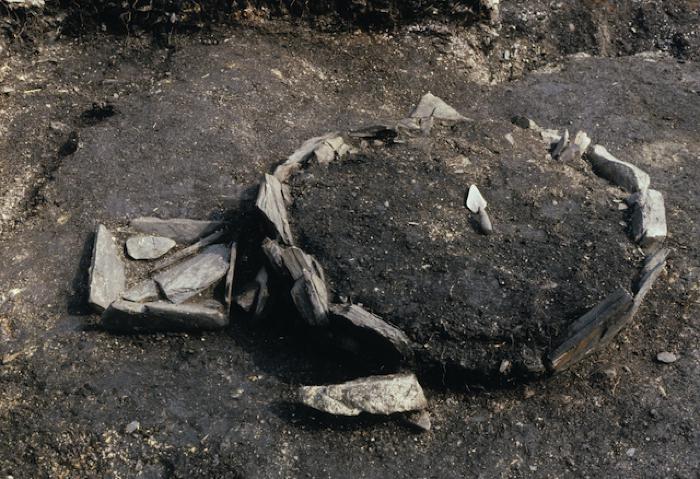Hearth, Kitchen — Kenirwik

In the center of most Alutiiq sod houses there was a stone-lined fireplace. In addition to heating and lighting the household, this hearth was a gathering place. People cooked around the hearth, repaired their tools, sewed clothing, and visited. In the evening, when families retired to small sleeping rooms, guests and single adults remained by the hearth to sleep and stay warm. The Alutiiq word for hearth reflects these functions. Kenirwik means “place to cook”, and it can be used for cookhouse or kitchen.
Alutiiq people created hearths by digging a shallow pit into the earthen floors of their homes. They lined these depressions with carefully trimmed slate slabs or encircled them with a ring of large, rounded beach cobbles. Some hearth pits were also lined with clay or small flat cobbles to retain heat. Hearths ranged in size from small fireplaces to enormous roasting pits, and some houses had several of these features.
Alutiiq hearths were also a spiritual place, where the living connected with departed relatives. According to Alutiiq tradition, when the fire cracks, the souls of the dead are hungry, and a piece of meat should be thrown into the flames. This practice mirrors the Yup’ik tradition of offering ancestors food through the fire. The Yup’ik believe that the souls of the dead wait beneath the hearth to be fed during winter festivals. Fire amplifies the small bits of foods offered to it by the living, ensuring that the dead do not suffer from hunger.
